Once you’ve selected your robot arm (see Part One of our “Building a Robot Cell” Series), the next most important decision will be to choose the right ‘gripper type’. This has a lot to do with your intended application, but it is also impacted by the parts you will carry and the expected production mix. Below are the considerations to take into account when choosing between underactuated and parallel grippers.
Underactuated “flexible” grippers
Grippers that are underactuated—meaning they have fewer actuators than joints—are considered “flexible.” They can conform to parts of varying shapes and sizes and support situations where part presentation is not 100% repeatable (e.g., picking a part off a conveyor or picking a part in a presentation tray). Underactuated grippers make it somewhat easier to program the robot cell and are a good choice for beginners. Some underactuated grippers even come with detection mechanisms that eliminate the need for programming, and you can customize the fingertips for greater precision.
| OnRobot Gripper | Robotiq Gripper |
|---|---|
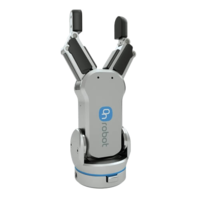 OnRobot RG2 |
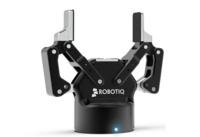 Robotiq 2F-85 |
Parallel grippers
With parallel grippers, the gripper’s fingers open and close in a parallel motion. A parallel gripper has an actuator in its tooling jaws, with fingers attached to grasp objects. Typically, parallel grippers are more accurate and have faster clamping speeds than other gripper styles. If you have a very rigid robot base and expect to keep the same setup for a while, you’ll probably achieve shorter (better) cycle times with a parallel gripper. You can also obtain higher precision by machining custom gripper fingers to fit specific parts.
| Electric parallel gripper | Pneumatic parallel gripper |
|---|---|
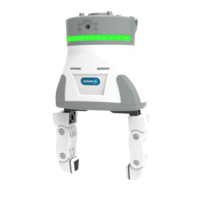 Electric parallel gripper |
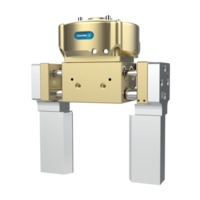 Pneumatic parallel gripper |
Choosing between underactuated and parallel grippers
Each application is unique, but here are some key factors to consider when choosing a gripper for your robot cell.
Underactuated grippers are good for:
- High-mix production (many part SKUs).
- Applications that don’t require high-precision picking.
- Round or unusually shaped parts.
- Parts with pick points that fit within the fingers’ max stroke width.
- Lighter payloads.
- Robot cells that can add to the gripper’s precision, such as by using locating pins.
Parallel grippers are good for:
- Low-mix production (ideally just one part SKU).
- Applications that require high precision and repeatability.
- Simple, predictably shaped parts.
- Larger parts (when pick points are too wide for flexible grippers).
- Heavier payloads.
- Applications that required parts to be picked from the inside out.
Comparing typical electric grippers
| Underactuated electric grippers | Parallel electric grippers | |||
|---|---|---|---|---|
 OnRobot RG2 OnRobot RG2 |
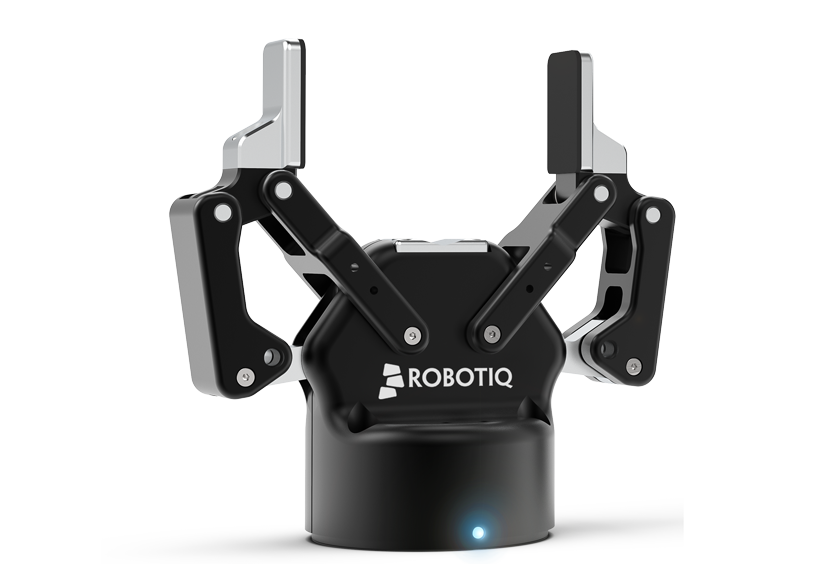 Robotiq 2F-85 Robotiq 2F-85 |
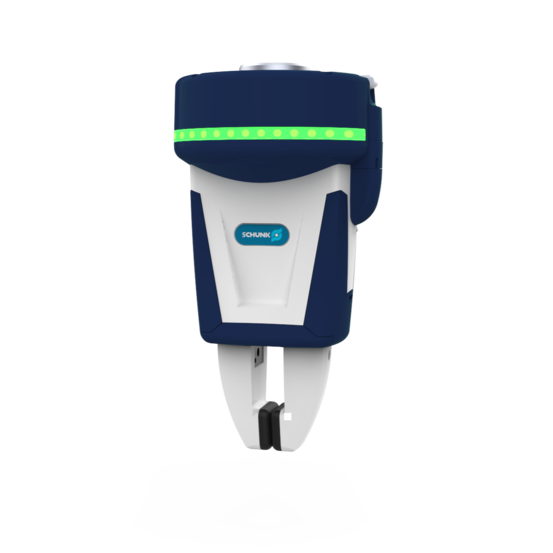 SCHUNK EGP-C SCHUNK EGP-C |
 SCHUNK JGP-100 SCHUNK JGP-100 |
|
| Max stroke (mm) | 110 | 85 | 12 | 20 |
| Max grip force (N) | 40 | 235 | 140 | 660 |
| Gripper mass (kg) | 0.78 | 0.9 | 1.22 | 1.72 |
For comparison purposes only; see the manufacturer’s product datasheet for official specifications.
Need support designing your next robot cell? To discuss the right choice of gripper for your application, or for any other related questions, talk to our experts.
